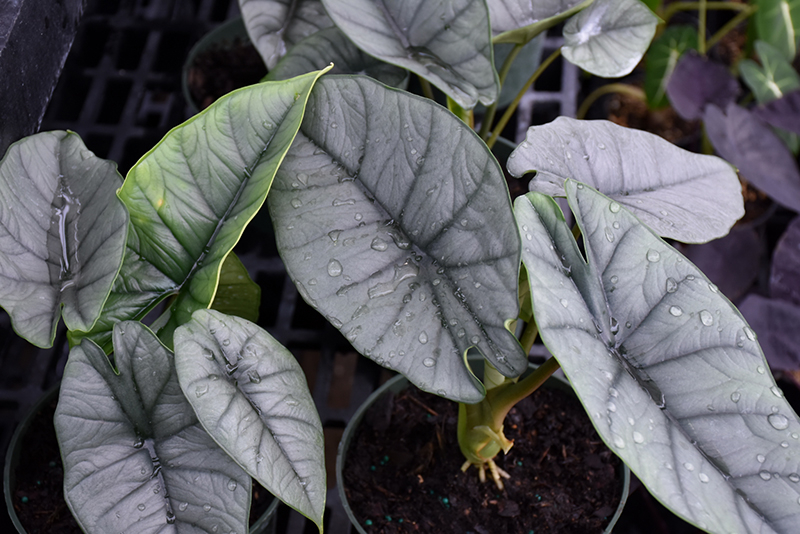Height: 3 feet
Spread: 3 feet
Sunlight:
![]()
Other Names: Elephant's Ear, Taro
Description:
This small variety produces stunning, silver-gray heart shaped leaves with contrasting black veins and reddish-purple undersides; this striking tropical makes a great houseplant; prefers bright, filtered sunlight
Features & Attributes
Silver Velvet Alocasia is primarily valued in the home for its ornamental upright and spreading habit of growth. Its attractive large glossy heart-shaped leaves emerge chartreuse, turning silver in color with curious burgundy undersides and tinges of dark gray throughout the year.
This is an open herbaceous evergreen houseplant with an upright spreading habit of growth. Its wonderfully bold, coarse texture is quite ornamental and should be used to full effect. This plant usually looks its best without pruning, although it will tolerate pruning.
Planting & Growing
When grown indoors, Silver Velvet Alocasia can be expected to grow to be about 3 feet tall at maturity, with a spread of 3 feet. It grows at a medium rate, and under ideal conditions can be expected to live for approximately 5 years. This houseplant should be situated in a location that that gets indirect sunlight at most, although it will usually require a more brightly-lit environment than what artificial indoor lighting alone can provide. It prefers to grow in average to moist soil. The surface of the soil shouldn't be allowed to dry out completely, and so you should expect to water this plant once and possibly even twice each week. Be aware that your particular watering schedule may vary depending on its location in the room, the pot size, plant size and other conditions; if in doubt, ask one of our experts in the store for advice. It will benefit from a regular feeding with a general-purpose fertilizer with every second or third watering. It is not particular as to soil type or pH; an average potting soil should work just fine. Be warned that parts of this plant are known to be toxic to humans and animals, so special care should be exercised if growing it around children and pets.
There are many factors that will affect the ultimate height, spread and overall performance of a plant when grown indoors; among them, the size of the pot it's growing in, the amount of light it receives, watering frequency, the pruning regimen and repotting schedule. Use the information described here as a guideline only; individual performance can and will vary. Please contact the store to speak with one of our experts if you are interested in further details concerning recommendations on pot size, watering, pruning, repotting, etc.
-- THIS IS A HOUSEPLANT AND IS NOT MEANT TO SURVIVE THE WINTER OUTDOORS IN OUR CLIMATE --
